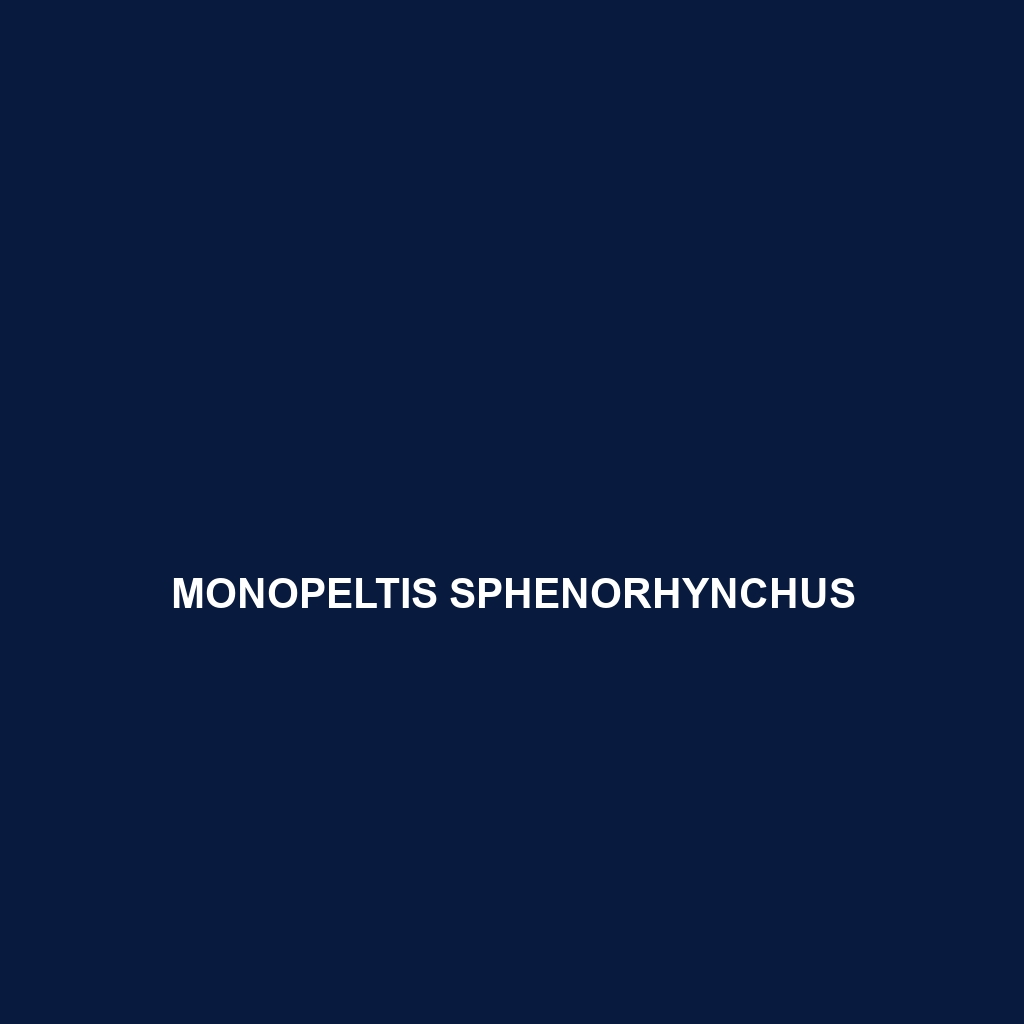Common Name
Monopeltis sphenorhynchus
Scientific Name
Monopeltis sphenorhynchus
Habitat
Monopeltis sphenorhynchus, commonly known as the African legless skink, primarily inhabits the diverse ecosystems across Sub-Saharan Africa. These species are predominantly found in regions such as grasslands, savannas, and around the edges of forests, enjoying warm climates and moderate rainfall. They thrive in both temperate forests and dry savanna areas, where they usually seek shelter beneath leaf litter, rocks, or burrowing into the soil. The habitats characterized by rich biodiversity provide essential resources and protection from predators.
Physical Characteristics
The Monopeltis sphenorhynchus is characterized by its elongated, snake-like body, which typically measures between 15 to 30 cm in length. This legless lizard features smooth, shiny scales that enable it to glide seamlessly through soil or leaf litter. The coloration is often a blend of browns and grays, which provides excellent camouflage in its natural habitat. A distinguishing feature is its elongated snout, which is adapted for burrowing. The absence of limbs sets it apart from other lizard species, highlighting its unique adaptation to underground life.
Behavior
Monopeltis sphenorhynchus exhibits primarily nocturnal behavior, coming out at night to hunt and feed during cooler temperatures. Its secretive nature makes it less visible during the day, residing mainly underground or hidden. These skinks are generally solitary, exhibiting minimal social interactions outside of mating periods. Their unique burrowing habits allow them to navigate through soil, using their bodies to propel themselves forward. They are not migratory but may exhibit some movement in search of food or optimal habitats.
Diet
Monopeltis sphenorhynchus is classified as an insectivore, primarily feeding on a diet that consists of insects, worms, and other small invertebrates. Their sharp, pointed teeth are well-suited for grasping and consuming their prey, allowing them to thrive in their habitat. Feeding typically occurs at night, where their keen senses help identify and capture their food efficiently. This diet plays a crucial role in controlling insect populations, contributing to the ecological balance of their environments.
Reproduction
The reproductive cycle of Monopeltis sphenorhynchus occurs seasonally, usually aligned with the warmer months when food availability is at its peak. Mating typically happens in spring, and females can lay a clutch of 2 to 5 eggs. The eggs are usually hidden beneath leaf litter or in burrows to protect them from potential predators. The incubation period lasts about 8 to 12 weeks, after which the hatchlings emerge fully formed and independent. Parental care is negligible, as the young are born ready to survive on their own.
Conservation Status
The conservation status of Monopeltis sphenorhynchus is currently listed as Least Concern by the IUCN Red List. However, habitat loss due to agricultural expansion and urban development poses a potential threat to its populations. Conservation efforts focus on habitat preservation and environmental education to mitigate human impact. Although not currently at significant risk, ongoing assessments will be essential to monitor changes in their habitat and populations.
Interesting Facts
One of the most interesting aspects of Monopeltis sphenorhynchus is its remarkable adaptation to a legless lifestyle. Unlike traditional lizards, these skinks have evolved to tunnel efficiently through the soil, which may reduce their vulnerability to predators. Additionally, their unique ability to sense vibrations in the ground allows them to detect potential threats while remaining camouflaged. This species showcases the fascinating complexity of evolutionary adaptations within the reptile kingdom.
Role in Ecosystem
Monopeltis sphenorhynchus plays a critical role in its ecosystem as a predator of small invertebrates, helping to maintain population balance. By consuming insects and other small organisms, they provide an important ecological service that supports plant health and biodiversity. Furthermore, their burrowing habits enhance soil aeration and nutrient cycling, contributing to overall soil health which benefits the surrounding flora and fauna. Their presence indicates a healthy and thriving ecosystem, emphasizing their importance in environmental stability.
